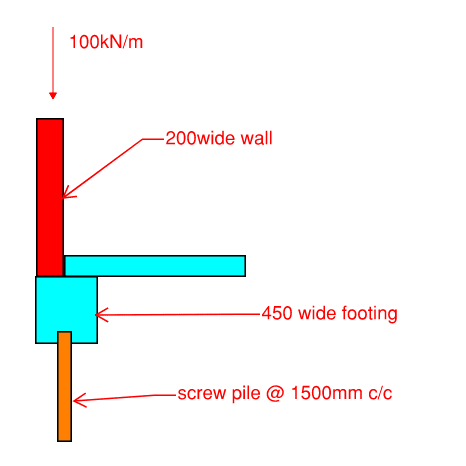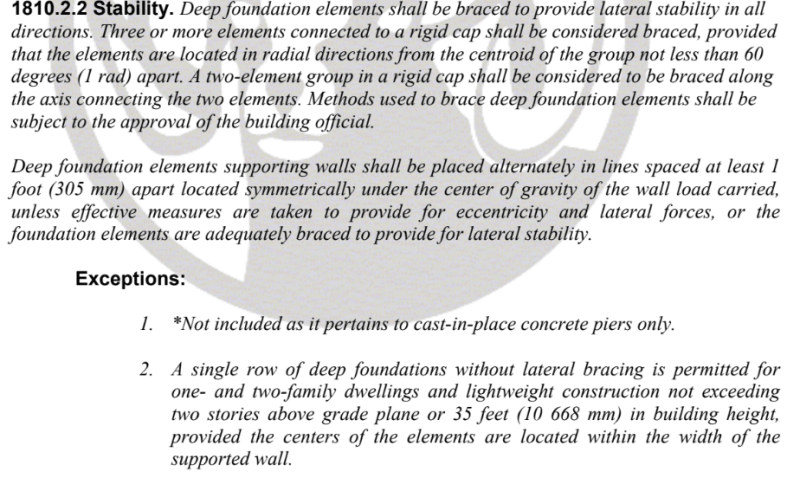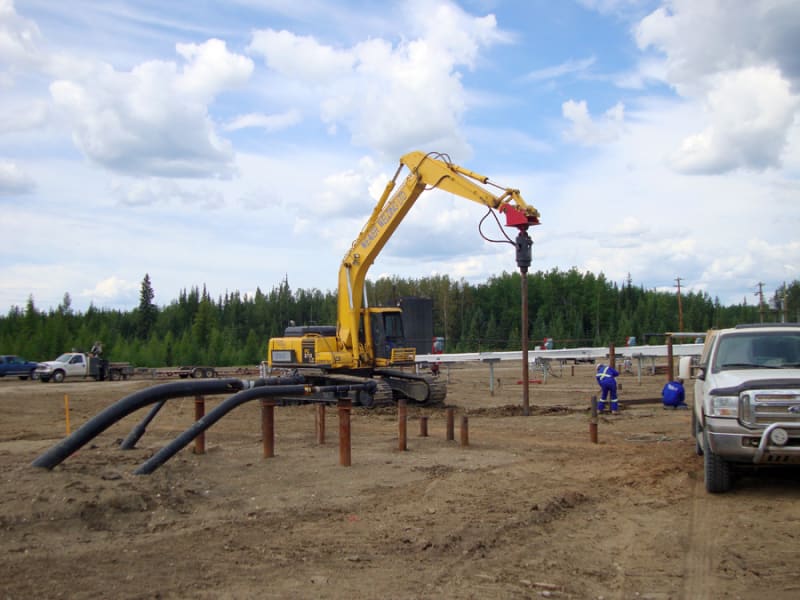1) I did a helical pile job in a high seismic, crap soils environment earlier this year and it very nearly drove me mad.
2) In many regions, these things can be ridiculously slender. Mine were 1.5" square. Seriously... the decimal point is in the right spot.
3) Per the blurb shown below, in some situations the code allows your to ignore the eccentricity. To make a go of it, you do have to bring your piles a lot closer to being in line with your wall load though.
4) As the other guys have intimated, it's very common for the piles to be embedded within a much narrower, wall-ish element that serves as a grade beam. Something in the 8"-12" thickness range perhaps. Going that route saves a concrete pour and reduces the eccentricity. Like you, I've worried about providing adequate tolerances in the grade beam for pile misplacement. Don't. The piling contractors can locate the piles within very tight tolerances.
5) A slick solution for more "commercial" applications is to stagger the piles as mentioned in the blurb below. That way, the piles themselves can form a stiff load path for resolving the eccentricity. Try this on a residential wood frame project, however, and your corpse will likely wind up cast into the foundations some place.
NOTE: the code blurb below in a US thing, not Australian. You may need to source and Antipode here to help you sort out local requirements.






